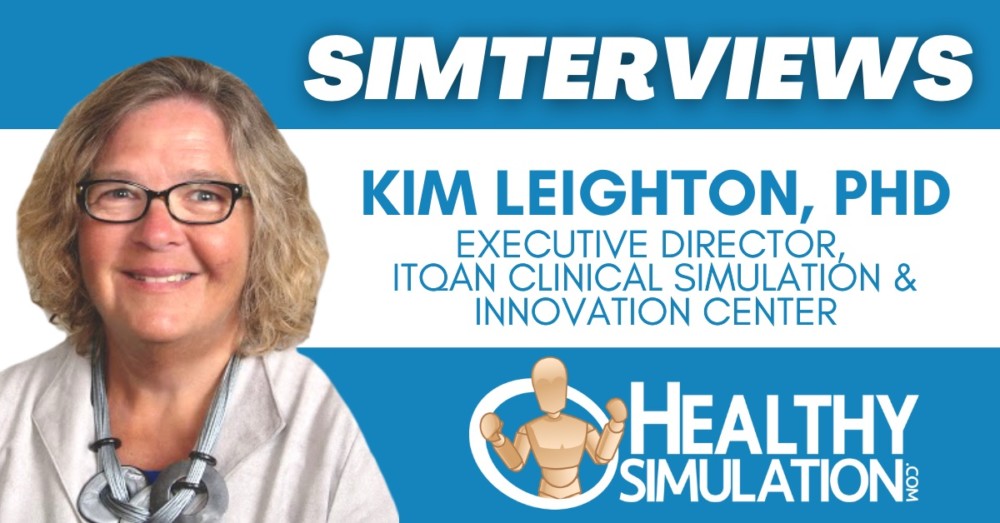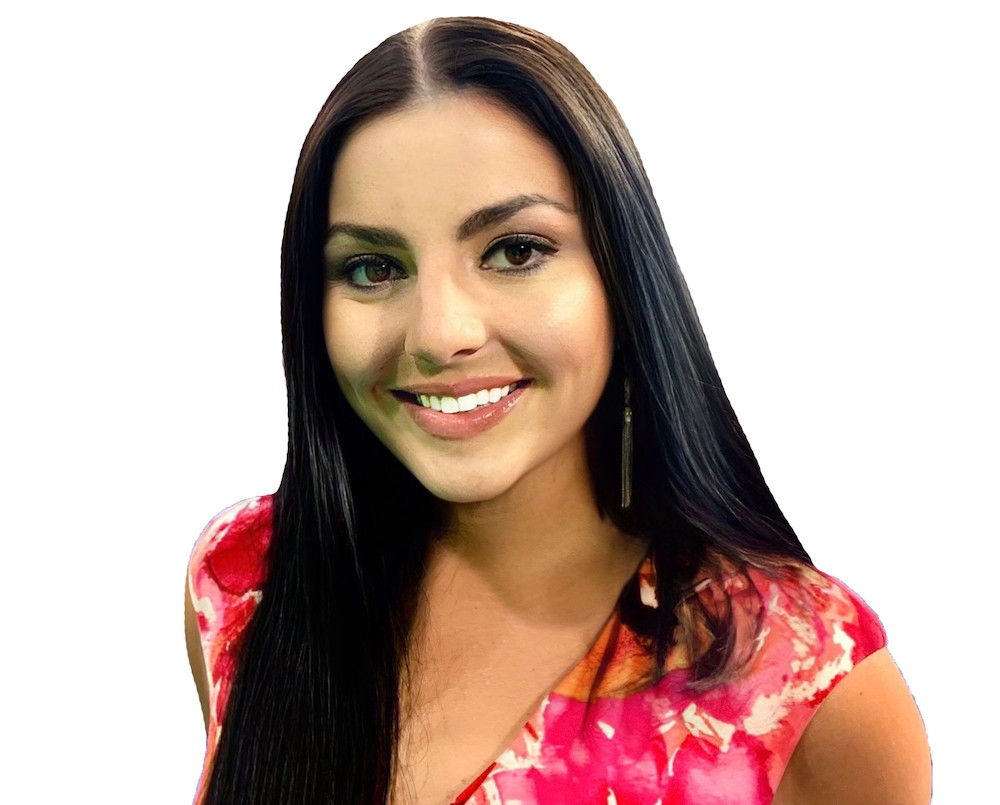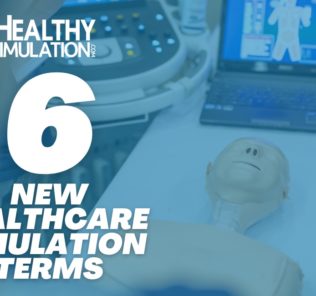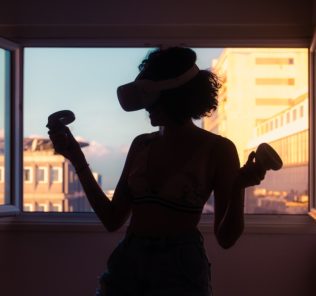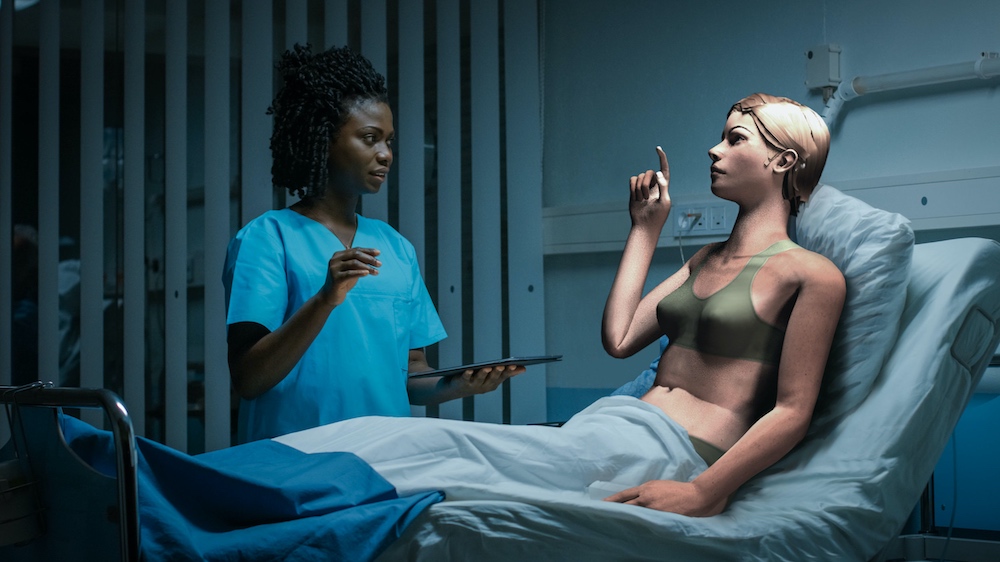Simterviews: Dr. Kim Leighton | Executive Director, ITQAN Clinical Simulation & Innovation Center
This week, HealthySimulation.com’s new healthcare simulation expert interview series “Simterviews” speaks with Kim Leighton, PhD, RN, CHSOS, CHSE, ANEF, FAAN. Executive Director, ITQAN Clinical Simulation & Innovation Center in Doja, Qatar. She is the founder of the Evaluating Healthcare Simulation website, and is respected as a simulation educator, researcher, and mentor. While president of the International Nursing Association for Clinical Simulation and Learning, Leighton spearheaded development of the Standards of Best Practice: Simulation. In this Simterview, HealthySimulation.com’s Content Director Lindsey Nolen asks about international clinical simulation, COVID-19 simulation policies and procedures and exciting virtual reality opportunities.
HealthySim: For those new to clinical simulation, please tell us a little bit about yourself. What is your role with the company/institution? What are your professional goals?
Dr. Kim Leighton: My background is in nursing, and I’ve been a nurse for 38 years, mostly in the emergency room. During an earlier pandemic when we had a horrible flu season, conditions weren’t safe for me to be working on the clinical side of healthcare anymore so I moved to education. I started teaching in a diploma nursing program, and we converted to a baccalaureate. About two years into that, I made the change to healthcare simulation and that’s all I’ve done ever since then.
Sponsored Content:
I’m now at Hamad Medical Corporation in Doha, Qatar. I’ve been here almost two years. I’m the executive director of our sim center, which is the Itqan Clinical Simulation and Innovation Center. In general, Itqan means striving for greatness, always striving to be better. My professional goal is to help move this healthcare simulation center toward becoming fully accredited.
HealthySim: What brought you into the field of healthcare simulation? What previous experiences are supporting your work in clinical simulation?
Dr. Kim Leighton: This is a story I tell a lot. When I was teaching in Nebraska, our president came to my office and asked if I could travel to Florida for a conference to relay to her whether or not I thought we should buy a simulator. I was like, “What’s a simulator?” She said, “It’s this computer manikin that we could use to teach nursing students. I’ve been saving money for years and I have enough to buy it, but I need someone to tell me whether we should.”
It was Nebraska and it was February, so I said, “Of course. I’d be happy to go to Florida next month.” So I went to this conference and I called her the same night and said, “Just write the check, because this thing is brilliant.”
Sponsored Content:
This was in 2003, so the human patient simulator from Meti was the only one available. We didn’t have the SimMan or anything yet but this, and it was a quarter million dollars. It was a really big step for us. When I got back, I had met some people at the conference, and they were in Kansas City. I called them and asked if I could hang out with them for a couple days and see what they were doing with the simulator. We’re still really good friends to this day.
There, I was shown how to use the simulator with nursing students. When I went back, Phyllis, our president asked how I thought we should manage our healthcare simulation training. I told her that I thought if she replaced my time with clinical simulation, I could devote three days a week to the simulator. We lasted like that six weeks, and then it became a full-time position.
I asked [Phyllis] years later, “Why did you pick me?” She said there were two reasons. The first was that I was the only one who knew what a simulator was because of the conference, and the second was that she knew I could convince people that it was a positive move. When you think about faculty finding out that a quarter of a million dollars was spent on one piece of equipment, they weren’t all real happy with that. They needed some persuasion.
So the career-changing question was, “Will you go to Florida?” That question changed my life. At the time of that conference, the healthcare simulation community was such a limited group of people.
I had been teaching in the skills lab for a couple of years. At that point in time, we thought it would be possible to just take the skills lab educators, put them in clinical simulation, and they would know what to do. We know now that it’s a whole different skill set for each of those kinds of teachers. Quite honestly, they’re very different because skills lab educators teach students by a checklist and then they are signed out. If they miss too many steps they don’t pass. In healthcare simulation it’s just the opposite.
We encourage students to try different things, make mistakes and learn from them. Taking someone who teaches by a checklist and putting them in an environment where students can mess things up didn’t really work. That was a long lesson to learn when we first got busy with medical simulation.
After I was in charge of Sim in Nebraska for a year, I went to work for Meti, which is now CAE Healthcare. After another year and a half I went back to Nebraska to a dean position at the same school.
HealthySim: What do you see as the biggest challenges we are currently facing across the healthcare simulation industry as a whole?
Dr. Kim Leighton: I think there are two, and I think they were both brought out by COVID-19. I think the biggest challenge is, how are we going to do this if we can’t do this face to face? People were forced very quickly to move their education online, but they weren’t taught how to teach online. That’s a whole different skill set — to teach online rather than to teach around the manikin.
The hope is that the college and university institutions will provide support to their educators to learn how to effectively teach online. At the same time, this has been the biggest missing part for us in healthcare simulation. I worry about a decrease in learning outcomes for our students because we might not really know how to teach clinical simulation very well online. That’s a big challenge because we’re going to be measured up against the NCLEX, our state board licensure. Our numbers are probably going to go down. We’ve had this major disruption in how we teach. We’ve lost our face-to-face clinical sites, we’ve had to move everything online without most people knowing how to do that effectively.
The other thing is that COVD-19 created this unsettled environment. There was unrest regarding the COVID-19 regulations, and in addition to that, there was unrest in terms of racial inequity, police behavior and other social issues. What I’m seeing as a result is all of these discussions relating to how we are going to be better about teaching culture and diversity in healthcare simulation when we’re pretty much surrounded by white manikins.
There is really only one shade of Black models. I live in the Middle East and we have half white models and half Black models, none of which look like the people who live here. Standardized patients are another concern where educators have not always given much thought into using patients that actually represent the population they’re teaching their students about. That’s a huge conversation across all platforms right now. Those are really big challenges for us to figure out.
HealthySim: What needs to happen for healthcare simulation to move to the next level of utilization?
Dr. Kim Leighton: I think there are two things. Affordability is still a barrier, though we’ve made huge strides in that over the years. As I mentioned, our first simulator was a quarter million dollars, and now you can get perfectly acceptable models for $30,000 or less. However, low-income places still can’t afford that.
Second, I hate to say it’s easy to get the clinical simulation equipment, but it kind of is because there’s grant and donor money available. What is almost impossible to get is the education and training so that people can learn how to teach with this equipment. In order to move forward, people need to be continually educated on how best to use clinical simulation equipment. When I go to conferences, every year it’s amazing to see the huge percentage of people who are brand new to the healthcare simulation community. For everyone who can go, there are just as many who can’t go to these events. We need help and support for faculty development. That’s the missing piece.
HealthySim: What would be your greatest advice to people just starting out in healthcare simulation?
Dr. Kim Leighton: My advice is that they need to take chances and risks. Get the simulator out of the box. We hear all the time about simulators still being in the box in the closet. Just go in on Saturday and get it out of the box, set it up, turn it on and play with it. Program it incorrectly and see what happens. Put in odd numbers, see what happens. Take the cover off of the manikin’s chest and see what’s underneath it. Play with it until you figure it out. There’s so much we learn when we make mistakes.
Even in Qatar, I go out on Saturday mornings and drive around without my GPS. I try to figure out how I’m going to get back home, because until you practice and practice you’re not going to learn. Take risks.
Also, network with everybody. Nobody is untouchable, and the people you think are on pedestals are not. Send them an email, pick up the phone and call them. This group of simulationists is still small and it’s super friendly. We all want to help each other get better. Network and use this as an opportunity to learn.
HealthySim: What is your greatest advice for those already engaged in healthcare simulation, who want to continue to maximize their outcomes and ROI moving forward?
Dr. Kim Leighton: My best suggestion is to saturate yourself. By that I mean read every manuscript that’s remotely similar to what your interests are. Read the books, join the organizations, follow the listservs, go to the conferences, and network tirelessly. This is how you can identify where your gaps are and learn how to fill those gaps because you’re doing this homework.
When I first went to work for Meti, I was starting work on my PhD. I was going to do it on clinical simulation, and at that point there were only about 71 published articles about healthcare simulation. There was practically nothing. Now, there’s so much it’s hard to keep up with.
Be an abstract reader, because then when the question comes up later you’ll be like, “Oh, I read something about that.” Keep the papers and create a database. You can always come back to this information. That’s my best advice, saturate yourself in the literature and the conferences.
HealthySim: What is something that is currently exciting you about the healthcare healthcare simulation industry right now? (A book, a website, a product, a service, research, conference, etc.)
Dr. Kim Leighton: What really excites me the most right now is that we have been given an opportunity to learn. We don’t have to rely on our employers to send us to a conference anymore because they’re all online. Where I live, my staff cannot go to a conference at all, no matter where it’s at. For us to go to conferences we have to travel outside of the country and it can get complicated.
This summer, I attended SimOps Delivers, SIMGHOSTS, INACSL, and more four-hour symposiums than I could even begin to count. I just attended six hours of webinars with ORBIS about ophthalmology simulation. I don’t do simulation in ophthalmology but I learned some things. The other beautiful thing about the online learning opportunities is that everyone is pricing them at a reasonable rate.
Now a four-hour seminar can be $20, and I can afford that and can send my staff. My staff members, who would never otherwise have the opportunity to attend conferences, have been saturated this summer, and it’s been a huge benefit for us. I hope that once we’re all vaccinated and COVID-19 is behind us that these virtual opportunities continue. I’m excited every time I get another email about a conference.
HealthySim: How has your institution responded to COVID-19? What were lessons learned?
Dr. Kim Leighton: We’re hospital-based and initially the Sim Center was completely closed. I held off about two weeks, then I petitioned Infection Control to let me reopen. Then we started to do COVID-related training and that’s all we did. My organization is a government facility that covers all of the country. During COVID we opened 37,000 isolation beds, 12,500 quarantine beds, 3,000 acute care beds and another 750 ICU beds. That’s about 50,000 more beds than we initially had.
However, the airport is still closed, so it became a question as to where we were going to get the nurses and the other staff to take care of all these patients. We also have one of the highest per capita infection rates in the world across our population of about 2.7 million. We’re getting close to 130,000 cases with a high percentage of positivity. Our numbers are now going down, but immigration remains closed.
The way we managed the surge was to “upskill,” and we trained 450 outpatient nurses in our Sim Center and a couple of quarantine hospitals to be ICU nurses to take care of COVID patients. We sent manikins to the quarantine hospitals so that they could train on-site. Now, because those 450 outpatient nurses are still working in the hospital, we need to reopen outpatient services. In order to do that they are now going to train office staff to be patient-care assistants to work in the outpatient facilities.
Our Sim Center has provided the support for all those trainings. The ER doctors and anesthesia had to learn some new airway management techniques. We have been running every day since we reopened. During the high surges of COVID infections we staged it though, and anyone on my team who could work from home and I staffed according to building activities.
Now we’re all back to work and we can feel that it is getting busier and busier because all the non-COVID things that were cancelled, people want to do that again. The challenge is maintaining a safe work environment for everyone and ensuring that COVID policies and procedures are adhered to so we can stay healthy.
HealthySim: Recommendations for others in terms of overcoming COVID-19 challenges?
Dr. Kim Leighton: We really learned the importance of communication, and of having a unified and strategic communication plan for everybody that works at the center. That includes security, housekeeping and anyone coming in and out. This was challenging because the information was changing every day and sometimes more than once a day. It was my job to make sure that everyone knew what they were supposed to be doing all the time.
It was hard, but it was invaluable. If you can keep everyone in communication, you’re going to decrease their anxiety. There was already enough anxiety over COVID-19 itself. If I could reassure our staff that we were doing everything we could to keep them healthy and safe then that was worth all of the efforts.
HealthySim: Your current role is as the Executive Director at the Itqan Clinical Simulation and Innovation Center at the Hamad Medical Corporation in Qatar. Tell us about the experiences you have gained from working with healthcare simulation outside the United States and in the Middle East, what is the same and what is unique and different?
Dr. Kim Leighton: I think that the biggest learning point for me was that where I work now, 99.2% of the nurses are from somewhere else. Less than 1% of our 18,000 nurses and doctors are from Qatar. Everybody comes from a different background and socioeconomic situation. Many people come here to support their families back home. Some things are more challenging here, like we can’t overnight Amazon products. It’s been a great challenge to learn to be patient, with products and myself as I learn about other cultures.
Language challenges were not something I really ran into until I came here. English is not the first language here, it’s Arabic, but almost everybody does speak English. There are 108 different languages spoken at our hospital so some have various dialects. Sometimes it’s challenging not only to understand the words, but the meaning behind the words.
My communication strategies are much different here than they were in the U.S. Because of the language differences, we don’t all use the same words to mean the same things. It’s been really rewarding to work with my staff and to create this really family-oriented team of people who are not afraid to tell me when I’ve confused them.
HealthySim: You created the wildly popular Evaluating Healthcare Simulation website — how has evaluating the field of healthcare simulation changed given the COVID-19 pandemic?
Dr. Kim Leighton: This is a website that houses tools. It has changed by realizing that we don’t have good ways to evaluate online simulation. I took one of my existing tools, which is the clinical learning environment comparison survey (originally designed for students to determine how their needs were met in the traditional clinical environment and simulation environment). We added a third environment, computer-based simulation. We did the study from the end of April to the end of June and the data is still being analyzed. The results may be surprising to people. Once we have the data analyzed, we will do some online webinars while we wait for the article to be published.
We need to really look at how we are evaluating this new learning environment and question if we can adapt existing evaluation tools to do that. I know a lot of people have used the simulation effectiveness tool – modified, which is also on our website. We really need to take the time to look at our existing evaluation tools and determine if they can be used to evaluate online sim, or if they need to be adapted. Or do we need to create something new and different?
My challenge for everyone who has ever created a simulation evaluation tool is to go back and see if it can be used across an online environment? We need to be able to evaluate the outcomes of what we’re doing right now, and the consequences are high.
HealthySim: Looking at the big picture, what do you feel is working well in the health care simulation space? Are we expanding the use of simulation in effective ways?
Dr. Kim Leighton: I think what’s really working well is the growth of virtual reality and augmented reality. It’s becoming more accepted, and we’ve got people creating new and different ways to use virtual reality. They’re also working hard to decrease the costs associated with it. I’m looking forward to seeing how this grows. There’s a lot of good research being done right now. That’s the natural next step for us, especially during this time where we’re challenged to do face-to-face manikin-based simulation.
HealthySim: What unforeseen benefits do you see from programs and professionals who take clinical simulation seriously?
Dr. Kim Leighton: This has allowed students to have repetitive training experiences and use simulation more often. Those who have the technology and the potential to use it have been able to expand into their communities. We also have the potential to really change health care, not just for one person at a hospital, but to decrease the error rate and number of patient deaths resulting from medical error overall.
Subscribe Now for More Great Simterviews!
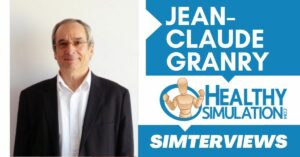
Simterview Avec le Professeur Jean Claude Granry, Pionnier Français de la Simulation en Santé
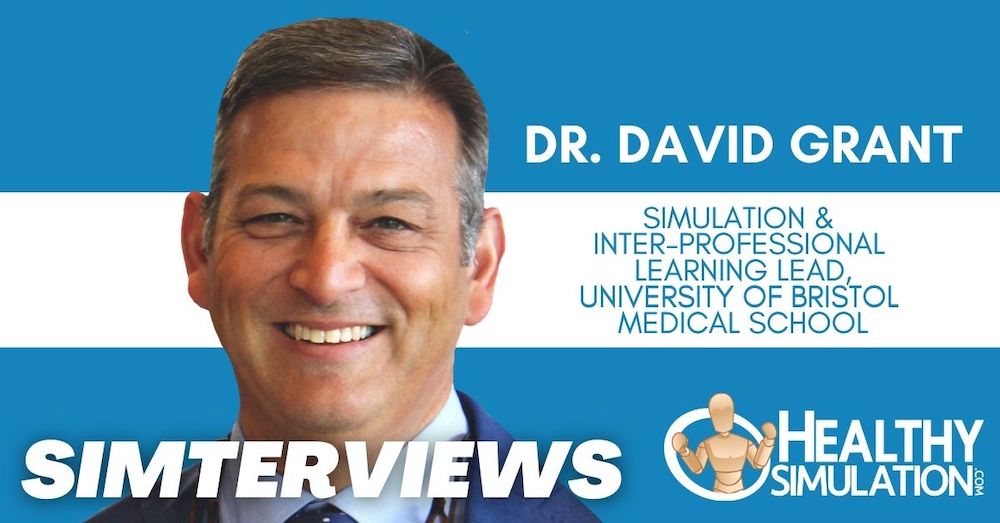
Simterviews: Dr. David Grant | Simulation Learning Lead, University of Bristol Medical School
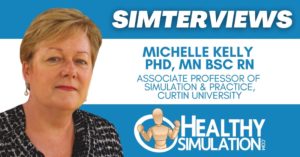
Simterviews: Dr. Michelle Kelly | Associate Professor of Simulation & Practice, Curtin University
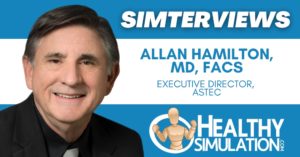
Simterviews: Dr. Allan Hamilton | Executive Director, ASTEC
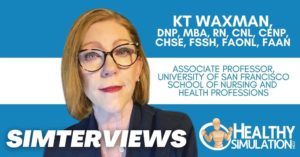
Simterviews: Dr. KT Waxman | Associate Professor at the Associate Professor at the University of San Francisco School of Nursing and Health Professions
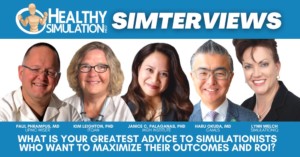
Simterviews: Medical Simulation Experts Discuss Ways to Maximize ROI
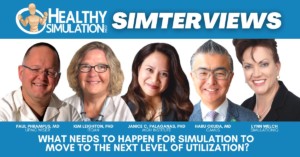
Simterviews: Medical Simulation Experts Discuss Next Level of Healthcare Simulation Utilization
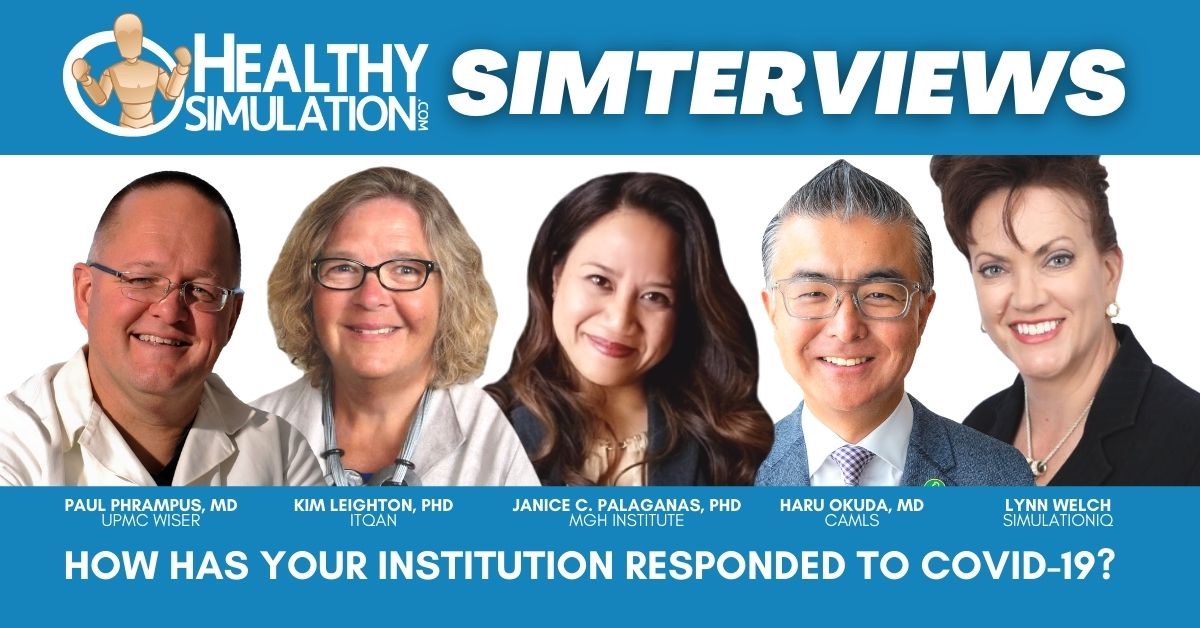
Simterviews: Medical Simulation Experts Discuss COVID-19 Responses
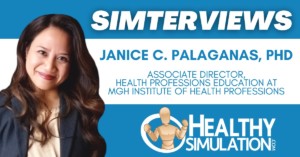
Simterviews: Dr. Janice Palaganas | Associate Director of PhD Program, MGH Institute
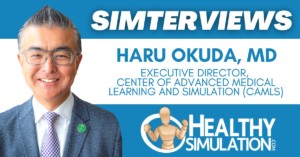
Simterviews: Dr. Haru Okuda | Executive Director, CAMLS
Lindsey Nolen is the Content Director for HealthySimulation.com. She is an award-winning journalist with years of experience writing about the many different facets of healthcare, including clinical simulation education and training. She also helped create content for the healthcare career information website, CareersinHealthcare.com.
Sponsored Content:



